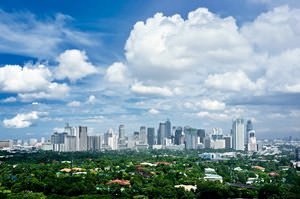 1. You should get travel insurance for the entire duration of your trip to the Philippines. You can do this through any travel agency or insurance company. The cost of insurance is usually low.
1. You should get travel insurance for the entire duration of your trip to the Philippines. You can do this through any travel agency or insurance company. The cost of insurance is usually low.
2. The state is located in a seismic zone. Earthquakes, volcanic eruptions, typhoons (on average about 20 per year) and storms often occur here. It is better to travel during the dry season (January to June) to minimize the risk of weather disasters.
3. It is better to avoid visiting some places in the Philippines. These are Central and Western Mindanao, Zamboanga, the Sulu Archipelago, southern Cebu province, Cotabato province, and Lanao. Various types of armed conflicts between the military/police and terrorists or insurgents often occur here. Terrorist attacks are also possible.
More than 7,000 Philippine Islands are located in the tropical marine climate zone. Summer, characterized by heat and dry weather lasts from January …
Read further
Read further
5. The urban transport system is developed satisfactorily in the Philippines. There are buses, jeepneys (minibusses), and trains here. It is more convenient and cheaper to use cycle rickshaws and motorcycles with strollers for short-distance trips. Manila airport consists of several terminals. There is no transport link between them. Therefore, you will have to get to another terminal by taxi or jeepney. There are always traffic congestions around the airport. Metro is the most convenient and reliable mode of transport in Manila.
6. You should not be on the streets of big cities after dark. Cases of robbery have become more frequent here. Theft is especially common in cities. Kidnappings of foreigners happen. You are definitely not allowed to gamble or participate in drug deals in any way. You should be careful with jewelry. It is better to leave expensive things and valuables at home. Credit card fraud is very common here. It is better to pay in cash in small shops and restaurants. You should pay by card only in large shopping centers. It is better not to leave valuables in hotel rooms. Put them in the safe. If there is no safe in the room, it must be at the reception.
8. You should bring a windbreaker if you plan to visit or live near the rice terraces. It might be cool out there. You can also get Japanese encephalitis near terraces.
9. Filipinos are religious people. They are reverent about temples and Holy places. You should not run, shout, and make noise in such places. You also should not appear in overly revealing outfits there.
10. Toilets are called comfort rooms in the Philippines. Accordingly, they can be designated as "CR". There are many toilets everywhere. They are often paid. You can also enter toilets in hotels, bars, and shops. Toilet paper may not be inside. You can find it somewhere outside the booth.
11. Smoking in public places is almost universally prohibited. Compliance with this rule is strictly monitored. Smoking on the beach can result in a large fine. A three-time violation entails a restriction of freedom for a period of three days. There is no ban on drinking alcohol in the Philippines. But locals may look at you with disapproval if you drink alcohol in a public place.
The culture, customs, and traditions of the Philippines have been influenced by the peoples living here throughout the country's history. Aeta is the …
Read further
Read further
13. Power sockets are specific in the country, as in the United States. They are designed for plugs with two flat contacts or with two flat contacts and a ground connection. You should take an adapter with you.
14. It is customary to leave tips in the service sector, catering establishments, and taxis. Some restaurants include the tip amount in the bill. Otherwise, it is customary to tip 5-10 % of the amount indicated in the receipt. It will be enough to leave a tip of $1-2 at the taxi and Spa.
15. You may bargain for a long time in small stores and markets. However, you should not do this in large shopping centers.



